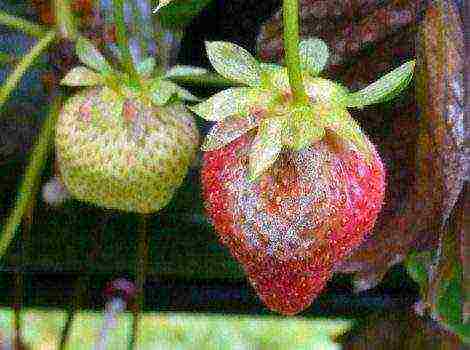Content
Mustards, Onion Hulls and Ash vs. Wireworm on Potatoes
The wireworm - or the larva of the click beetle - is an insect pest that feeds on roots and causes a lot of problems for gardeners and gardeners, does not tolerate mustard.
Received its unofficial name due to the similarity with solid wire, has a length of up to three centimeters and a diameter of up to 4 millimeters, a dense cover and three pairs of legs located symmetrically at the head.
general information
In the main attack of the wireworm in the gardens, potatoes, radishes, turnips, carrots, turnips are exposed, the larva does not disdain and onions.
So, to the wireworm to the liking:
- wet places
- acidic soils
- dense plantings and deposits of organic debris
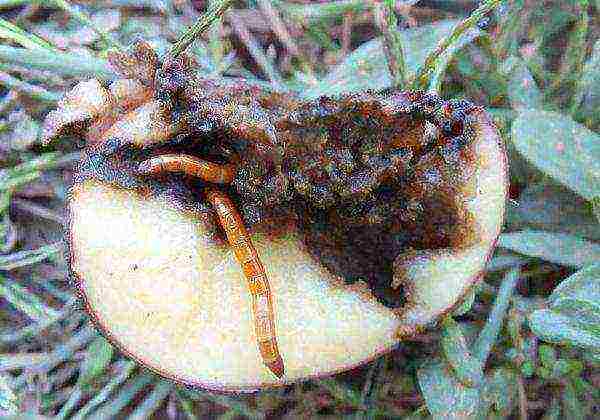
How to tell if your soil is acidic or alkaline
Method 1: Take a closer look at which plants prevail in your area. If plantain, wheatgrass, biting grass, horsetail, sorrel, you have acidic soil.
Method 2: Try the following experiment: pour vinegar over a handful of earth. If the soil is alkaline, there will be a reaction - bubbles and "boiling". If the soil is acidic, there will be no reaction.
Wireworm diligently avoids:
- mustard
- legumes (and therefore nitrogen compounds)
- phytoncides
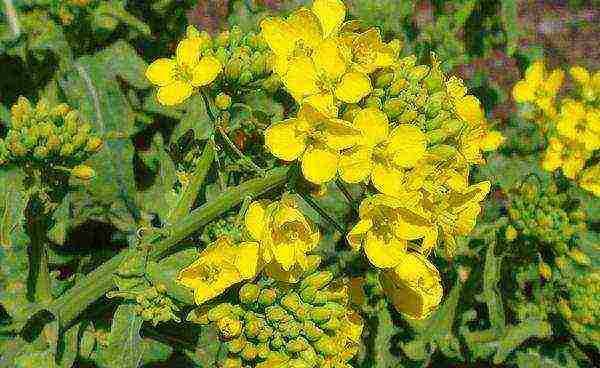
This is due to the fact that mustard contains sulfur compounds (which determines its spicy, burning taste), which is completely not to the taste of the larva of the click beetle.
How to use wireworm mustard on potatoes
This plant of the cabbage family is used in two ways.
Mustard powder application
It is necessary to add when planting potatoes one teaspoon of dry mustard powder in each well.
If the amount of wireworm goes beyond all limits, you can mix mustard powder with red ground pepper (in accordance with 5: 1). Among other things, both mustard and red pepper also have antibacterial properties.
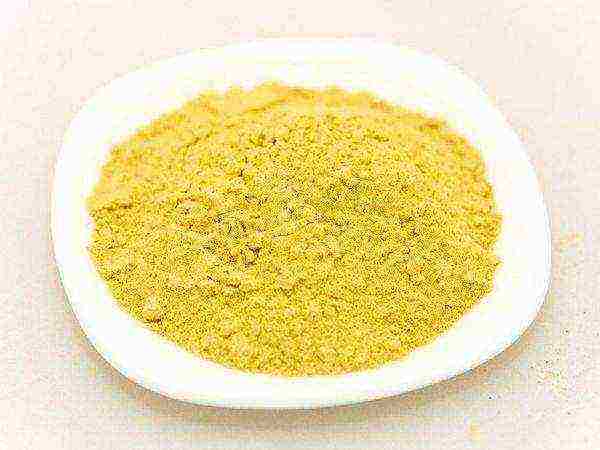
Sowing as live fertilizer
Mustard is an annual plant, it able to build up green mass very quickly, accumulating useful potassium, phosphorus and nitrogen. Mustard must be sown before planting potatoes (in April-May) over the entire area of the potato field.
Mustard is unpretentious and can withstand frosts down to -5 degrees. Before the potatoes are planted, the plant will have time to mature, it must be mowed and dug into the surface layer.
How else can you effectively deal with the wireworm
Returning to the list of preferences of the larva of the clicker beetle, there are three main areas of work in the garden:
- avoiding dense plantings
- carrying out periodic weeding of plantations (especially from cereals and creeping wheatgrass)
- work on reducing soil acidity... In the latter, fluff lime, chalk, dolomite flour or ground eggshell will help.
It is advisable to carry out work to reduce the acidity of the soil before starting garden work: apply fertilizer to the surface and deeply dig the soil. Lime additives are recommended no more than once every 3 years.
What is dangerous for potatoes
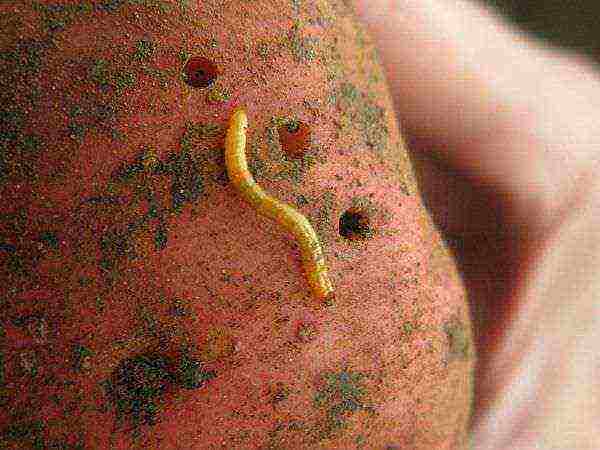
Damaged tubers become watery quickly flabby and darken... The waste products of the larva left in the potatoes also contribute to rapid fermentation.
When harvesting potatoes, damaged material must be carefully rejected. If the larvae get into the vegetable store, they can damage almost the entire crop, moving from one tuber to another.
Chemicals
In the fight against the wireworm, "Bazudin", "Thunderbolt-2", "Medvedoks-U", "Calypso" are widely used. Granules of the drug "Provotox", introduced into the hole during planting, have a long-lasting effect.
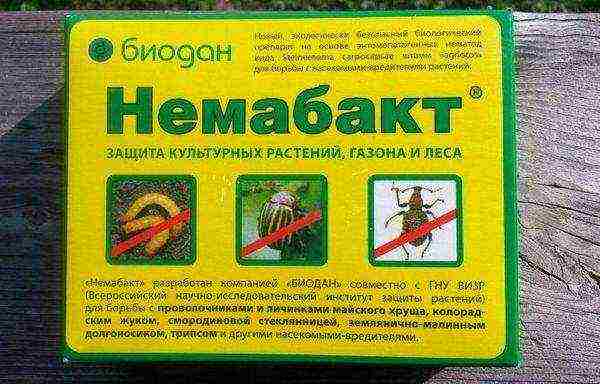
The newest chemical agents include the bacteriological preparation "Nemabakt" - a symbiosis of a predatory nematode and bacteria. Nematoda, falling into a wireworm, triggers the destruction mechanism... Moreover, the actions of the predator are narrowly focused: it is safe for earthworms and other inhabitants of the soil, as well as for humans and animals.
Other means
Legumes
Legumes produce nitrogen compounds needed to feed any garden crop. Also, nitrogen reduces the acidity of the soil. And for gardeners faced with a nut beetle larva, legumes are of strategic importance.
On the field it is recommended to plant legumes in rowsalternating planting potatoes. Thus, legumes will act as a protective barrier for a gluttonous pest.
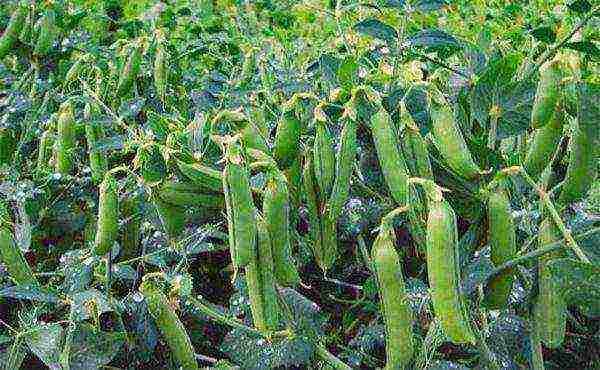
Onion peel
When planting potatoes, a handful of onion skins... You can enhance the effect by mixing the husk with the needles of any coniferous tree.
Phytoncides are a natural antibiotic that provides natural plant immunity. It has been proven that these substances are released by absolutely all plants, just some plants produce them only for their own protection, while others are able to help others.
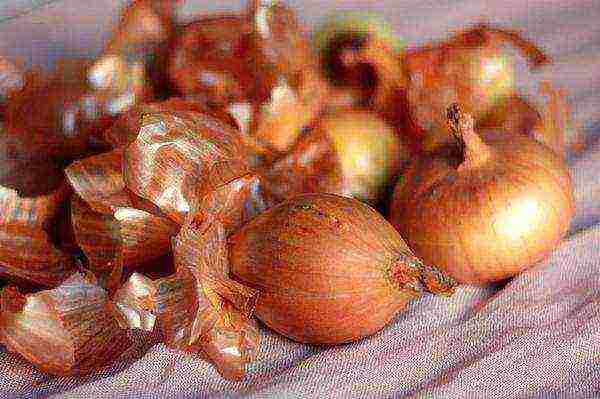
Marigold
Flowering bushes of calendula or marigolds have a deterrent effect for the wireworm. Recommended sow them in rows between rows of potatoes or around the perimeter.

Ash
Wood ash has a neutralizing effect, is actively used by gardeners in soil deoxidation, in top dressing. It is advisable to add wood ash before digging at the beginning of each garden season.

Siderata
It is especially recommended to use this method if the potatoes grown from year to year in the same place... The soil is depleted, and it is possible to replenish the reserves of nutrients only by introducing organic matter.
Siderata are plants grown in vegetable gardens for additional soil nutrition. Usually they are allowed to grow to the formation of seed pods and mowed down and then embedded in the soil. During fermentation, green manure plants enrich the soil with organic fertilizers.
When starting the fight with the wireworm, you need to remember that the cycle of transformation of the beetle larva into an adult is five years. Therefore, there is no need to hope that it can be defeated with one-off measures. You need to try to make the life of a wireworm in the garden unbearable, applying all of the above in a complex.


